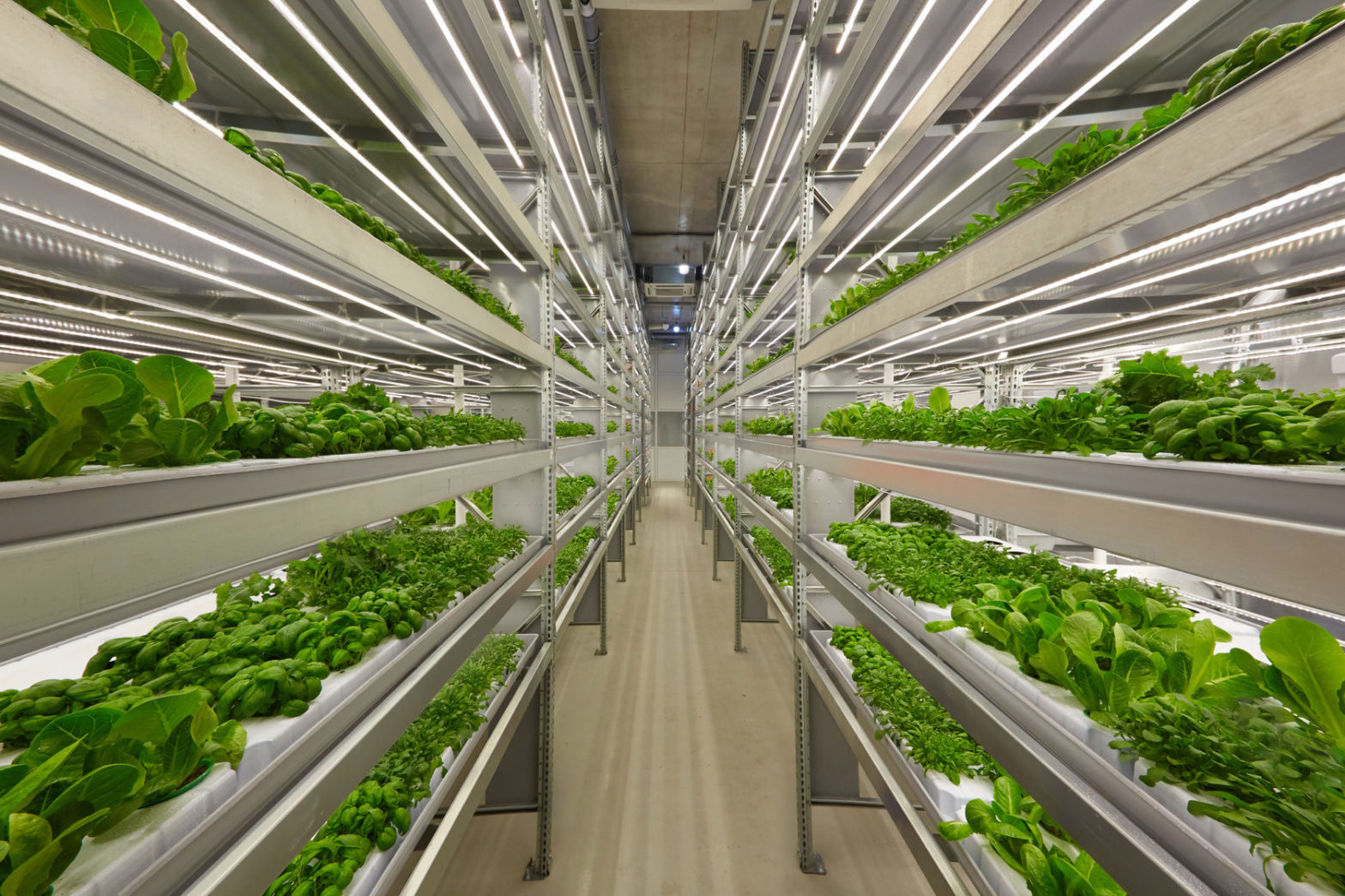Vertical farming methods differ from traditional farming methods by focusing on expanding up, rather than “horizontal farming” by expanding growing areas left and right. To keep up with the growing population, farmland will need to increase by the size of Brazil by 2050.
The concept of vertical farming is perhaps the most important development in agriculture over the past 20 years or so. It all started in 1999 when Dickson Despommier, a professor at Columbia University, began to develop vertical farming with his students.
In a short amount of time, the field of vertical farming has made significant developments thanks to new technology. Developments in soil-free ways of delivering nutrients to plants and improved grow lights have made vertical farming more appealing. These technologies combined with the need for sustainable agriculture have made vertical farming the way of the future.
Types Of Growing Systems
There are three main types of vertical farming systems that you’ll see used. Each of these systems is used in different environments to serve different purposes.
Some systems are designed to show off vertical farming technologies in an aesthetically pleasing way, while others operate very efficiently.
Wall-Mounted Systems
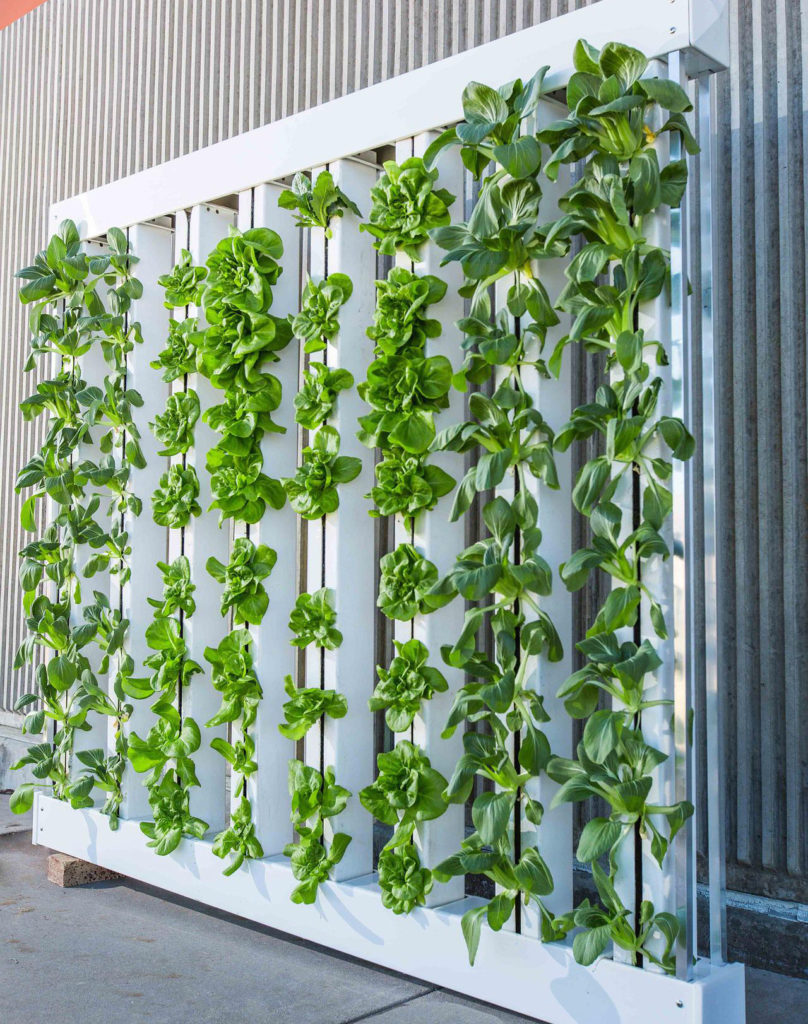
Wall-mounted systems are the most basic growing system but can be the most aesthetically pleasing type of system to install. Wall-mounted systems are easy to implement and require little space and capital to install.
By using a wall-mounted system you take advantage of open wall space to grow plants while taking up minimal floor space. Wall-mounted systems can be any height from a single row of plants to the ceiling of wherever they are installed.
I first worked with hydroponics using a system much like the one above. A local bar had a smaller version of the system installed that was painted to match their décor. We delivered live herbs there once a week so that they could be harvested for drinks, plus it looked great.
The plants are watered with a nutrient solution from the top, which then wicks to the roots of each plant on the way down. This method of drip watering has some issues though.
The biggest downside is that they are prone to leaking if the nozzle is bumped out of place. Leaks can also occur if a plant’s stem grows at a downward angle, which can be hard to control.
The other downside to this system is you are only taking advantage of growing in a 2-dimensional space. Since the plants are growing out from a single flat surface, you’re limited to the size of the wall.
Freestanding Towers
Freestanding towers are just what they sound like, individual towers that are simply placed on the floor. These towers typically have a reservoir with a submerged pump that pushes water up, then gravity waters the plants.
Compared to wall-mounted systems, freestanding towers are much more efficient offering a 360-degree area to grow plants. These systems typically have a reasonable footprint of 4-9 square feet per tour, offering 20-80 feet of growing space. On top of that, you can technically build up the tower with as many layers as needed.
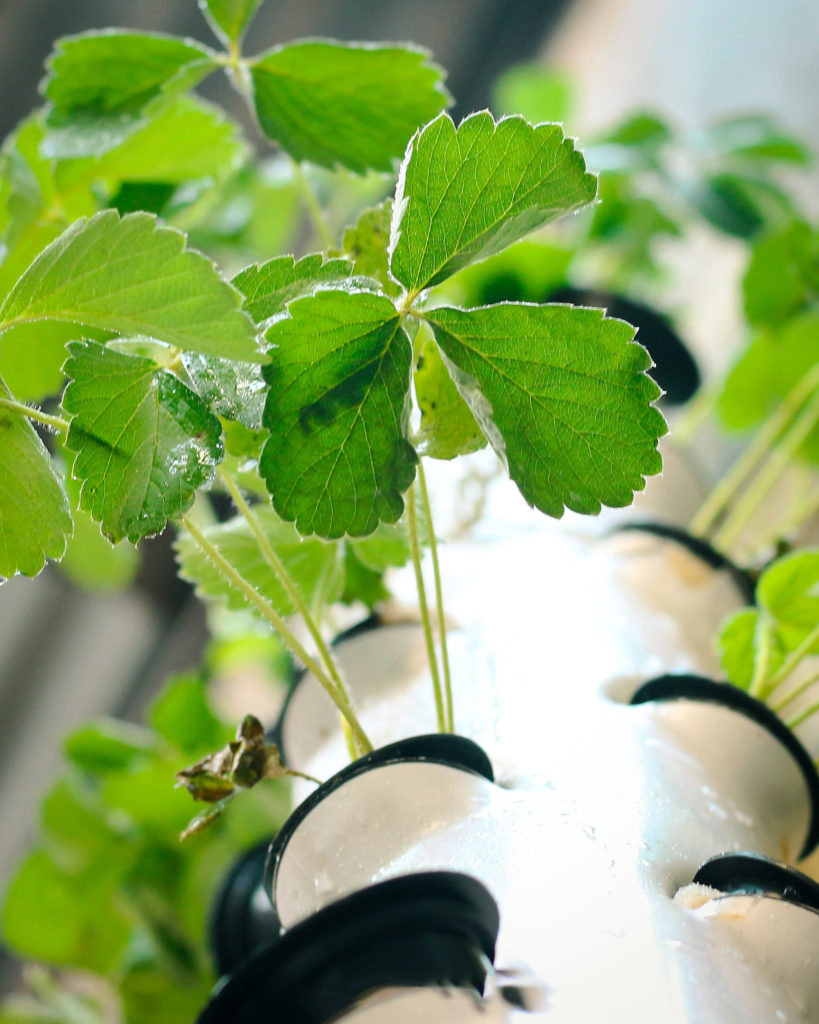
Typically towers will be in the range of 6-12′ tall although there is no real limit. From a practical standpoint, tower height is limited because pumping water vertically becomes difficult and requires large amounts of energy.
Tower height is also limited due to stability reasons. As towers become taller they are more top-heavy and likely to tip over. In a commercial operation, workers lose efficiency if they need to use equipment taller than ladders to reach the top.
Freestanding towers are great for hobbyist growers looking to maximize space and small-scale producers looking to get a large yield without investing in expensive equipment.
Vertically Stacked Layers
Vertically-stacked layers is a broad term but represents the commercial operations and large-scale production possible with vertical farming. Essentially plants are grown in one large flat area stacked on top of one another. The bottoms of each layer are covered in high-tech LED lights that provide maximum growing potential.
A nutrient solution flows through the plant’s roots, or it is sprayed on to the roots to give the plants all of the building blocks they need to grow. Building vertically this way means that you can stack many plants in one building and use the minimum amount of resources.
Stacking up plants provides optimal growing conditions, and unlimited vertical potential, and can be almost fully automated using new technologies. Workers can then take out individual sections to harvest and transplant into them.
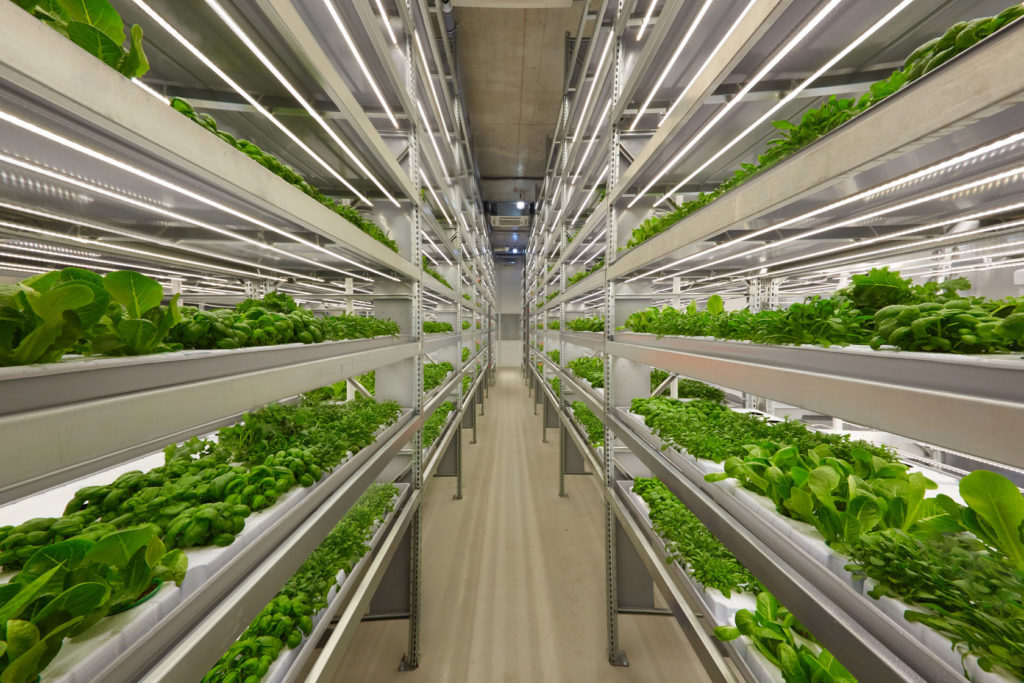
How The Plants Get Their Nutrients
When it comes to how the plants in a vertical farming system get their nutrients, you typically see one of three practical methods: hydroponics, aquaponics, and aeroponics. Each of these methods has its own set of benefits and drawbacks and performs best in certain situations.
Almost always you’ll see soilless growing methods used for vertical farming. Growing without soil means that you have total control of nutrients and the growing environment. This also cuts down on weight significantly, another important aspect to consider when building up.
Hydroponics Systems
The oldest and most simple method of soil-less growing is hydroponics. Hydroponics is the use of liquid or dissolved nutrients in the water that goes directly to the plant roots. Crops grown this way will grow faster than soil-grown methods and uses very little water since the systems recirculate the water.
Hydroponics is the most foolproof method compared to aquaponics and aeroponics because there are fewer components in the system. This is especially relevant for vertical farming because treating any issues will be easier if there is less to diagnose.
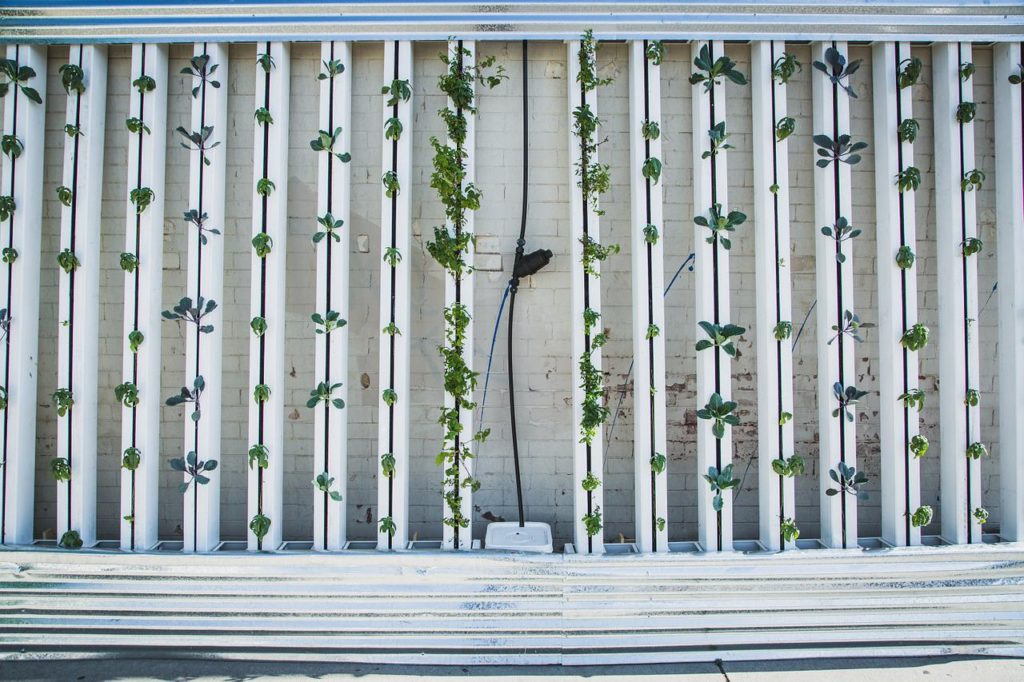
Growing food with hydroponics leads to a fresh and healthy option and when grown indoors offers a controlled environment meaning the crop production can be done herbicide and pesticide free. This cuts down on costs, labor, and the amount of chemicals that are used.
Selecting the right hydroponic nutrients can be a daunting task with so many options out there. Thankfully Global Garden carries an entire Greenhouse Feeding Mineral Line carefully selected for each stage of plant development and offers whatever quantity suits your needs best.
Aquaponic Systems
Aquaponics is an emerging technology combining hydroponics and aquaculture, hence aquaponics. Aquaculture is the practice of raising fish, whose waste is broken down from ammonia into nitrates and other micro and macro-nutrients forming a nutrient-rich solution.
Many species of freshwater fish can be used for aquaponics, but the most common are tilapia, koi/goldfish, perch, trout, and catfish. Fish are kept in large fish tanks where the solids are filtered out and the ammonia is converted into nitrates before being filtered into the rest of the system. The whole system forms a loop where plants filter out the water before it is returned to the fish and starts over.
The nutrients that are in aquaponics systems are not as dialed in as controlled dosing methods, so plant growth suffers as a result. Aquaponics works best for leafy greens and relatively low nutrient requirement crops and is still more efficient than traditional in-ground growing.
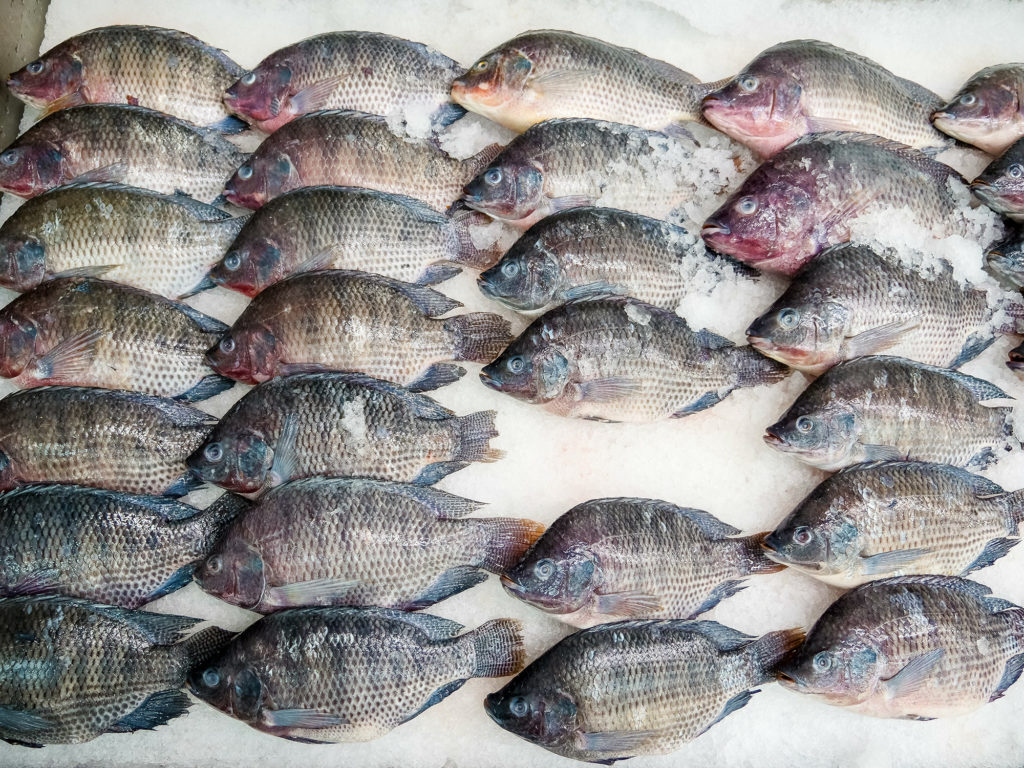
Aquaponic systems are rarely viable as a commercial operation but are very popular with hobbyists. Growing proteins and produce in the same system is very low waste, energy efficient, and producing two foods from the same system has its benefits.
Those searching for a self-sufficient way to produce food are turning to aquaponics more and more, especially in countries with limited food access. Research in designing more efficient systems is being done constantly to produce aquaponic food with as few resources as possible.
Aeroponic Systems
Aeroponics systems are a lot like hydroponic systems except they use spray nozzles instead of flowing water. The plant roots are directly misted with the nutrient solution giving them plenty of aeration and nutrients.
Aeroponics is the most sophisticated design and is highly water efficient, using the least amount of water of any method of farming. However, aeroponics comes with many possible problems as a result of the streamlined design.
One of the biggest problems is the nozzles themselves. Since aeroponics relies on very thin misting, any large particles can clog up the nozzles. Careful filtration and additives are needed to prevent any clogs, and the equipment needs to be checked often.
Aeroponics also carries a greater risk of bacterial growth than other methods. The misting process creates a warm, humid zone underneath the plants great for anaerobic bacteria, most notably E. coli.
Another possible issue with aeroponics is it is more electricity-dependent than other methods. In the event of a power outage, plants can begin to dry up and wilt faster than in hydroponics where roots are suspended in water or in a growing medium that will retain moisture.
Aeroponics is commonly implemented in places where maximum water efficiency is needed and is seeing development across the U.S. and Japan. Aeroponics is such an efficient method of indoor farming that it will most likely be the method used to grow plants in space.
What Equipment Is Needed For Vertical Farming?
A Place To Grow
The first step to vertical farming is selecting a place to grow. While you can use vertical farming systems outdoors, most of the time they are implemented in urban areas where space is limited and access to fresh food is rare.
The beauty of vertical farming is getting maximum food production out of limited square footage. Greenhouses might be the best option in terms of efficiency, but growing indoors has become popular as well. Abandoned warehouses can be adapted to feed thousands of people, or all-in-one systems can be built in a shipping container.
Shipping container farms is a simple method of growing crops for urban populations without arable land. Shipping containers can be discreet and stacked on top of one another, and a 40′ x 8′ container can provide almost 1000 square feet of growing space in 320 square feet.
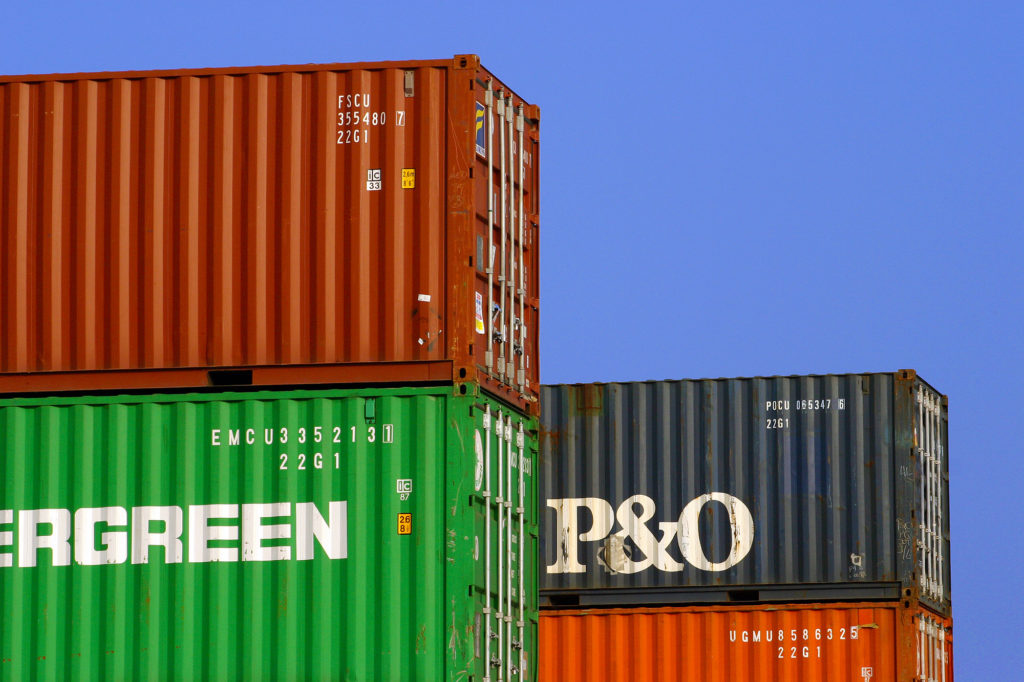
Growing indoors also means that fresh food can be grown year-round, unlike traditional outdoor growing which is limited by the seasons. Indoor vertical farming also means that consistent crop yields can be predicted, without the risk of weather.
If you are interested in reading about a proposed commercial solution to feed the global population with vertical farming, here is an article on the subject written by Dickson Despommier.
Lighting
Lighting is perhaps the most important aspect of vertical farming and allows us to produce crops indoors, or increase yield year round. Even in greenhouses, it makes sense to have supplemental lighting to extend the hours that plants get light in the winter, or provide light on cloudy days.
Some plants benefit from specific light cycles including both the intensity and color of the lights. Not just any lights will work either, and specialized grow lights have been developed in the past decade for this purpose.
Modern lighting offers capabilities to adjust the intensity, lighting spectrum, and built-in sensors that will guarantee your plants are getting the light they need. The Dimlux Xtreme Series LED Fixtures are a great option for lighting being fully adjustable and energy efficient, coming in 500W, 750W, and 1000W options depending if you need supplemental light or maximum lighting for a high-value crop that benefits from additional lighting intensity.
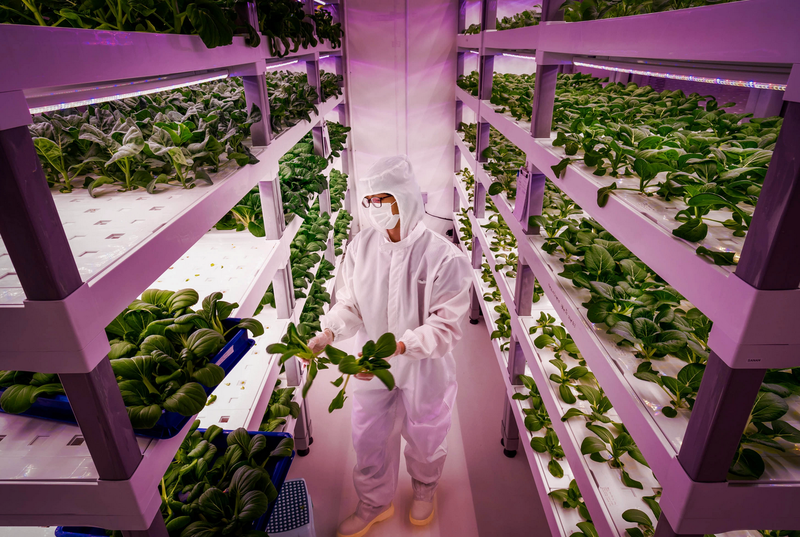
Miscellaneous Equipment
If you’ve got the system picked out, lighting figured out, and somewhere to put everything, then the majority of what you need to get started is covered. However, there are a few other things you’ll want to have on hand that you might not think about right away.
- Harvesting equipment: Pruning shears may be all you need, or you might need packaging, transportation, and a drying room.
- A ladder: Having a ladder on hand will help reach all parts of the system for maintenance and makes harvesting easier
- Tables and storage: Work spaces and storage areas are almost always the one thing indoor growers wish they had more of.
- Cleaning supplies: Having some sponges, buckets, and Gard’nClean on hand will cover most messes and disinfecting equipment
- Grow glasses: Grow lights are incredibly bright and if you’re going to be in the same room as them, bring eye protection.
While there is a lot more that you’ll need to grow with a vertical farming system the five items above are commonly overlooked. The other best ways to figure out what you need is to learn from videos, ask around, find a mentor, and don’t be afraid to try new things!
The End!
You’ve reached the end of this article! Vertical farming techniques have come a long way in a short amount of time, and there is plenty more to be covered than would fit in this article. A great place to start would be with this article Which Nutrients Are Needed For Hydroponics which will cover the topic of what nutrients plants need in more depth.
If you are planning on building or purchasing a vertical farming system for personal or commercial use, this article should give you a good starting point for what is the right choice for you! We hope you enjoyed and please stick around to read our other content, new stuff is being added all the time!
